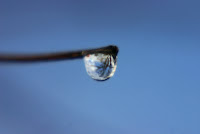Brand
Chances are, you're going to hit up your local Home Depot and look at their selection of sprinkler controllers and timers. You will be faced with a few different choices. One quick way to narrow it down is to decide on a brand.
As you shop around you're going to find that there are a few different brands that make very similar looking timers. Some brands include:
- Orbit
- Hunter Industries
- Toro
- Melnor
- Vigoro
But which should you choose? Let's look at some reviews:
This review is from: Melnor 3015 6-Cycle Electronic AquaTimer Digital Hose Timer (Lawn & Patio)"Considering how much landscaping costs, there's little reason to scrimp on timers. I learned this the hard way, coming home from vacation to find my yard brown and parched. This timer, which was less than a year old had failed, and as a result, so did my grass.This review is from: Toro 53787 Ecxtra 6-to-8-Zone Sprinkler Timer with Software and Module (Lawn & Patio)
I'm now in the market for a new one that actually works."
"The controller itself is solid and is a snap to install and set-up. The software and timepod are a great concept but suffer form horrible execution. By themselves, I would give them 1 star. They are supposed to be releasing new software shortly (the current software is copyrighted 2004), which will hopefully address the stability and feature issues."This review is from: Orbit 57096 Super-6 Controller with Remote (Lawn & Patio)
"I've used Orbit in the past and have controllers that have lasted many years. I've purchased multiple high-end, much more expensive Rainbird units that never had lasted more than 2 years."
Rain Sensor
If you live in an area that gets a lot of rain, you could save yourself a lot of money if you go with a sprinkler timer that is compatible with a rain sensor or that has one built in. Rain sensors allow for the timer to be able to tell if it has rained recently. If it has, it will not tell the sprinklers to turn on because the lawn is already wet. This is an awesome feature that a lot of people are impressed by. While you're at it, look for a rain/freeze sensor combo so your sprinklers know to shut off in freezing temperatures!Hose Faucet Watering
If you don't have a huge lawn or are not equipped with an underground sprinkler system you can always go with a Hose Faucet Watering system. Orbit makes timers that make hose watering a breeze.Afraid you're going to forget to turn off the hose? Problem solved!
Here's what people are saying.
This review is from: Orbit 91213 One-Dial Garden Hose Digital Water Timer (Lawn & Patio)"This is the best water timer we have ever had! It is so simple to program and one can easily make changes. We love it!"This review is from: Orbit 91213 One-Dial Garden Hose Digital Water Timer (Lawn & Patio)
"I water the horses 4 times a day. The Orbit One-Dial Water Time takes care of that for me now! It frees up my time for other chores. It was easy to set up and easy to override if I need to. I love it!"
Consider Everything
Before you settle on a timer, make sure you've done your research. There are hundreds of options and even more reviews at your disposal.Consider:










































